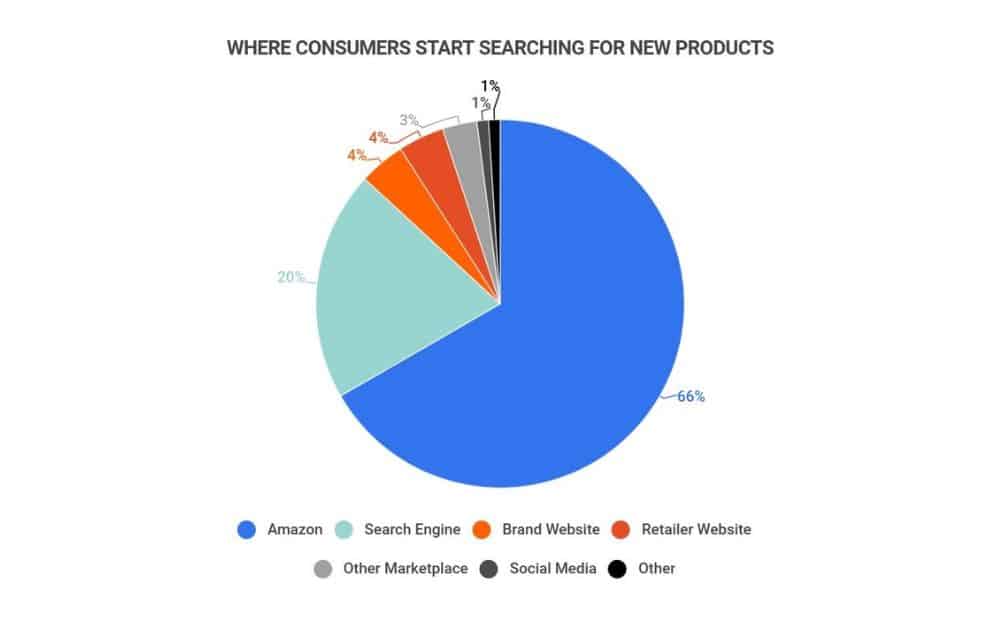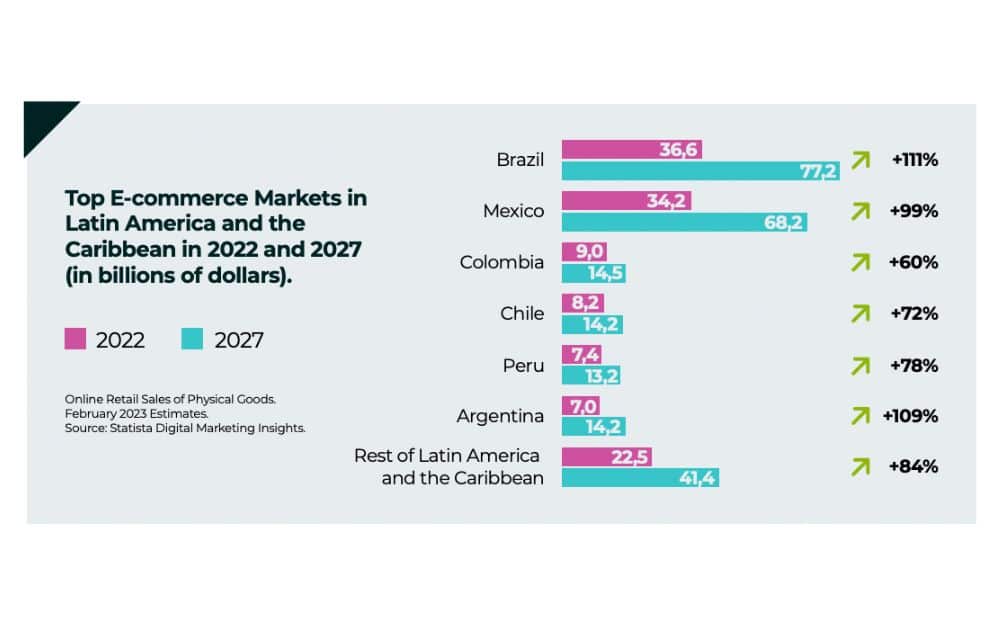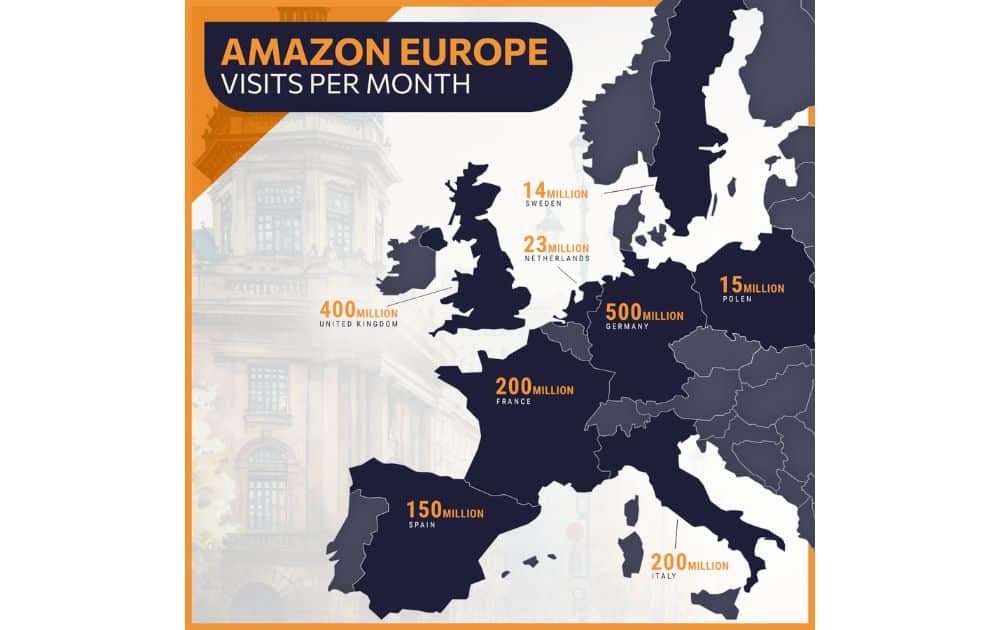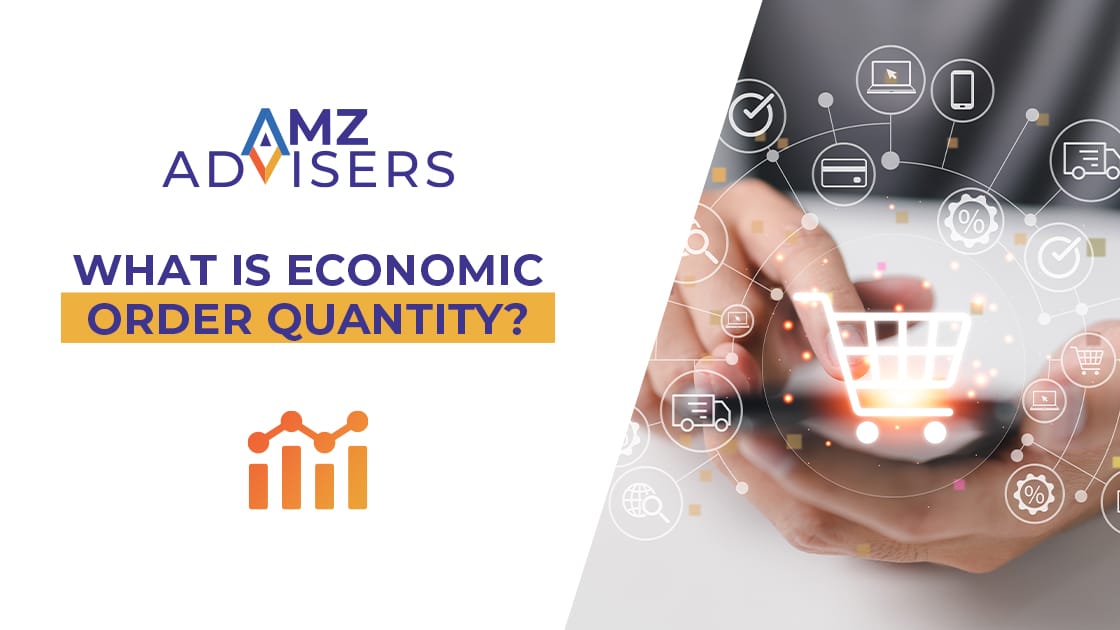Borders are no issue for online sellers, but international expansion is not easy.
Most Amazon sellers looking to expand their market come at a crossroads when choosing how to broaden their market – which one should choose between Remote Fulfillment vs. Marketplace Expansion?
This pivotal decision could mean the difference between local success and global dominance. With data from Zippia showing that 66% of consumers start searching for new products online on Amazon, planning your global expansion is surely a promising initiative.

Many sellers wonder what the difference is between remote fulfillment vs marketplace expansion. So we unpacked these complex strategies to help you determine the best route for your business’s international growth.
What is Remote Fulfillment?
Before we compare Remote Fulfillment vs. Marketplace Expansion, let’s first discuss what Remote Fulfilment is and how you can use it for cross-border ecommerce.
Remote Fulfillment is a service offered by Amazon that allows sellers to expand their sales into international markets without needing to manage separate inventory or fulfillment operations in each country.
Since Remote Fulfillment is part of Amazon FBA, the marketplace will take care of storage and shipping for you. And you’ll also open yourself to a wide new customer base, north and south of the border.
Plus, you won’t deal with customs or country taxes! Purchases incur import fees, but they still enjoy free shipping.
We also recommend using Amazon’s Build International Listings tool. This perk will duplicate ASIN fees, currency, and language. From then on, you’ll be ready to start selling.
Related content: How the Amazon Supply Chain Works
What is NARF?
Related to this and equally important is NARF, which stands for North America Remote Fulfillment.
NARF is a specific implementation of Amazon’s broader Remote Fulfillment strategy, which allows sellers to leverage Amazon Remote Fulfillment with FBA and sell their US inventory to Canada, Mexico, and Brazil.
The key of Amazon NARF is that it uses a global SKU to showcase your products across North America and Brazil. In short, the Amazon NARF program centralizes your sales. You won’t need an active store on each marketplace.
With data from eMarketer’s Global Retail Ecommerce Forecast showing that Canada and Mexico are among the top ten countries with increasing ecommerce penetration, considering NARF is surely worth looking into.

LatAm E-Commerce Report 2023, meanwhile, identifies Brazil and Mexico as Latin America’s top growth ecommerce markets, with projected compound annual growth rates of 77.2% and 68.2, respectively, by 2027.

Here’s how Amazon Remote Fulfillment, specifically NARF, works:
- Sellers store their products in their home country’s Amazon fulfillment centers. For US sellers, this means using their existing US-based FBA inventory.
- Sellers can list their products on foreign Amazon marketplaces without needing to send inventory to those countries.
- When a customer in a foreign market places an order, Amazon uses the seller’s inventory from the nearest domestic fulfillment center to fulfill the order. Amazon handles the entire fulfillment process, including picking, packing, shipping, customs clearance, and local delivery.
Related content: How to Sell on Amazon in Mexico
Marketplace Expansion via Amazon Global Selling
Now comes the second part of definitions before we dive into our Remote Fulfillment vs. Marketplace Expansion comparison. What is Marketplace Expansion via Amazon Global Selling?
Amazon Global Selling is a program designed to help Amazon sellers expand their business internationally by enabling them to list and sell their products in over a dozen Amazon marketplaces worldwide.
This program allows an international seller on Amazon to reach customers beyond their home market by providing access to international markets such as:
- Europe
- Asia
- North America
- Middle East
Through Amazon Global Selling, sellers can manage orders in other marketplaces by using the platform’s fulfillment solutions, such as FBA, to handle ecommerce processes, including:
- Shipping and logistics
- Customer service (pending remote fulfillment concerns, etc.)
- Returns
Amazon Global Selling offers an easy way for sellers to scale up their operations globally. Amazon US aside, data from Statista reveals that the biggest Amazon marketplaces are Germany, the United Kingdom, and Japan.
That said, it’s not surprising that many sellers have been exploring the idea of selling on Amazon Japan. As for tapping the German and British markets and other European marketplaces, EFN can be an efficient solution, which we’ll discuss in the next section.
What is EFN?
European Fulfillment Network, or EFN, is an Amazon service that allows sellers to store their inventory in one of Amazon’s fulfillment centers in a single European country and sell their products across multiple European marketplaces.
Think of EFN as the counterpart to Remote Fulfillment with FBA. By using EFN, sellers can have centralized inventory and fulfill orders from customers across Amazon’s European marketplaces, such as:
- Amazon.de (Germany)
- Amazon.fr (France)
- Amazon.it (Italy)
- Amazon.es (Spain)
- Amazon.co.uk (United Kingdom)
If you’re an Italian seller, you can rely on Amazon EFN to showcase your items in Spain. Then, you can fulfill an order for a Spanish customer from your local Amazon warehouse.
This approach helps reduce the complexity and costs associated with international shipping and logistics while also providing the benefits of local delivery speeds and shipping rates.
As with Remote Fulfillment, any Europe-based FBA seller is eligible for Amazon EFN. You only need to set up an Amazon Europe Stores account. Then, open a local store in the countries you wish to sell to.
Your account will link all cross-border orders to your main inventory. From here on, you can list your products in each store, and start selling to customers.
EFN is particularly lucrative for sellers looking to capitalize on the immense traffic and revenue potential of leading European markets like Germany and the United Kingdom via marketplace expansion.

By using EFN, sellers can efficiently manage a single inventory across these high-volume markets, where Germany alone attracts over 500 million visitors monthly, and the UK garners substantial Amazon revenue of $30 billion, as cited by Blankspace.
Remote Fulfillment vs. Marketplace Expansion: Pros and Cons
When considering Amazon’s Remote Fulfillment vs. Marketplace Expansion, it’s crucial to weigh the pros and cons of each approach to international selling.
Here’s an outline of the benefits and drawbacks associated with Remote Fulfillment vs. Marketplace Expansion:
Remote Fulfillment
Pros:
- Simplified Logistics. Since Amazon handles international shipping, customs, and fulfillment logistics, sellers can expand globally without worrying about the operational complexities of cross-border logistics.
- Lower Initial Costs. There is no need for a local presence or inventory in the target market countries, reducing the initial investment required to test new markets.
- Ease of Use. Utilizing the existing Amazon FBA infrastructure, sellers can manage international sales through familiar interfaces and processes, making it easier to scale operations with fewer changes to current business operations.
Cons:
- Limited Market Reach. Remote Fulfillment is typically limited to certain countries, primarily within North America for NARF, which might not cover all potential markets sellers want to enter.
- Less Control Over the Customer Experience. Since the fulfillment process is entirely in Amazon’s hands, sellers have limited ability to customize the delivery and customer service experiences.
- Potential Higher Long-Term Costs. While initial costs are lower, the fees associated with cross-border fulfillment and potential issues like returns and customer service can accumulate, impacting profitability.
Marketplace Expansion via Amazon Global Selling
Pros:
- Greater Market Penetration. Sellers can establish a direct presence in multiple markets, allowing for a broader customer base and increased brand visibility globally.
- Enhanced Control. Sellers have more control over inventory, pricing strategies, and customer service, which can lead to better customer satisfaction and loyalty in different markets.
- Customization Opportunities. There is greater scope to tailor products, marketing, and sales strategies to meet local preferences and demands, potentially increasing the effectiveness of marketing efforts.
Cons:
- Higher Complexity and Costs. Managing operations across multiple international marketplaces increases complexity, requiring more resources for logistics, customer service, and compliance with local regulations.
- Increased Risk. With greater investment in international markets comes higher exposure to market-specific risks, including economic fluctuations, regulatory changes, and competitive pressures.
- Resource Intensive. Successful marketplace expansion requires significant resources, including time, expertise, and capital, to manage the diverse aspects of global business effectively.
Strategic Tips for Sellers
As you take your pick between Remote Fulfillment vs. Marketplace Expansion, here are a few strategic tips to keep in mind to ensure business sustainability.
Market Research
It doesn’t matter if you’re going for Remote Fulfillment vs. Marketplace Expansion – either way, you need to conduct thorough market research before jumping the gun.
Take the time to understand the demand in your target countries. Doing so ensures that your product offerings align with local tastes and preferences, which can vary significantly from those in your home market.
For instance, here’s a list of the best-selling ecommerce products in popular Amazon marketplaces outside the US:
- Brazil – Perfumery and cosmetics, Home and decoration, Health (Source: PCMI)
- Mexico – Clothing, Electronics, Telecom (Source: Glopal)
- Japan – Clothing; Books, Movies, Music, and Games; Food and Beverages (Source: Statista)
- Germany – Fashion, Hobby and Leisure, Electronics (Source: ECDB)
As you research the pros and cons of Remote Fulfillment vs. Marketplace Expansion, put effort into learning about the target audience you want to tap.
Localize Your Offerings
For successful Marketplace Expansion, tailor your product listings to fit local markets. This includes translating and localizing content, adjusting pricing strategies to match local purchasing power, and understanding regional holidays and shopping seasons.
Monitor and Manage Inventory Levels
Data cited by MYOS revealed that 82% of small businesses that have failed did so because of poor cash flow management. That said, whether you’re opting for Remote Fulfillment vs. Marketplace Expansion, you need to carefully monitor and manage inventory levels.
Overstocking can tie up valuable cash and increase storage fees, particularly in Amazon’s FBA program, where long-term storage can become costly. Conversely, understocking can lead to missed sales opportunities, especially in high-demand periods.
The Bottom Line
Deciding between Remote Fulfillment vs. Marketplace Expansion on Amazon involves balancing your business’s strategic objectives with its operational capabilities and growth ambitions.
At the end of the day, Amazon benefits from increasing seller success. So, it’s no wonder that it wants to promote your international eCommerce expansion.
FBA sellers will reap more benefits from Remote Fulfillment. This is doubly true if you wish to boost sales in Canada or Mexico, or Amazon Europe.
Now, the Amazon global selling program also features some great perks. You can expand into Africa, Asia, South America, or the Middle East. Plus, there’s a bit more interaction with end users.
As the global ecommerce landscape continues to evolve, the choice you make today could significantly influence your business’s future trajectory.
Author





